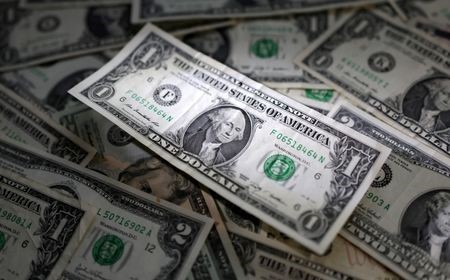




Policy Rate Updates: Double cut finale
 DOWNLOAD
DOWNLOAD

Monthly Economic Update: One for the road
 DOWNLOAD
DOWNLOAD

Inflation Update: Still low, still slow
 DOWNLOAD
DOWNLOAD


US yields decline amid speculation on large Fed rate cut

NEW YORK – US Treasury yields moved lower on Friday as the possibility of a supersized interest rate cut by the Federal Reserve next week gained ground again.
Former New York Federal Reserve President Bill Dudley said on Thursday there was a strong case for a 50 basis point interest rate cut at the Fed’s Sept. 17-18 rate-setting meeting.
Market participants also mentioned news articles in the Financial Times and the Wall Street Journal, which highlighted that the size of the first cut could be a close call for Fed officials, as factors that spurred bets on a large cut.
Speculation around a larger half-percentage-point rate cut may have also been triggered by a sizeable bet on a 50 basis point cut that hit the rates futures market late on Thursday, said Spencer Hakimian, CEO of Tolou Capital Management, a New York-based macro hedge fund. After that trade, the market-implied odds that the Fed will reduce interest rates by 50 basis points jumped to 45% from 15% “in the blink of an eye,” he said.
The probability of a 50 basis point cut was last seen at 51% on Friday, up from 28% on Thursday, CME Group data showed.
Many in the market, however, remained skeptical about the need for a large rate adjustment given continued resilience in the economy and recent signals that inflation, while declining, remains somewhat sticky.
“I’m looking for the market to pull back here; I just don’t see the economic and inflation data justifying a 50 basis point rate cut,” said Tony Farren, managing director in rates sales and trading at Mischler Financial Group.
For Gennadiy Goldberg, head of US rates strategy at TD Securities, bond volatility was to be expected in the absence of fresh signals from Fed officials. Their remarks last week, before entering a so-called quiet period ahead of the September rate-setting meeting, were seen as endorsing a quarter-percentage-point reduction and leaving the door open to further and perhaps bigger moves.
“In a vacuum, you get lots and lots of volatility by definition,” said Goldberg. “We know it’s going to be a discussion, but had they wanted to send a signal that the market should be priced in for 50 basis points, they would have sent one.”
On the economic data front, Friday’s releases did not change the overall picture of a gradually slowing economy.
A release by the Labor Department’s Bureau of Labor Statistics showed on Friday that US import prices dropped by the most in eight months in August amid lower costs for fuels and food products, suggesting domestic inflation will continue to subside in the months ahead. Two-year yields declined briefly after the data.
Meanwhile, a preliminary reading of the University of Michigan’s September consumer sentiment index improved slightly, standing at 69 compared with analysts’ estimates of 68.5.
Benchmark 10-year yields were last at 3.647%, down from 3.68% on Thursday. Two-year yields, more closely linked to monetary policy expectations, declined to 3.576% from 3.648% on Thursday.
The curve comparing 10- and two-year yields, which investors look at closely for its signals on the economic outlook, widened to about 7 basis points, the steepest it has been since July 2022.
(Reporting by Davide Barbuscia; Editing by Jonathan Oatis)
This article originally appeared on reuters.com





 By Reuters
By Reuters